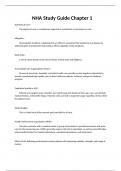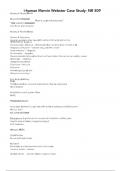Examen
Science-Reviewer-3rd-Quarter-for--biology
- Grado
- Institución
LESSON 1: NERVOUS SYSTEM NERVOUS SYSTEM - The nervous system receives and Relays information about activities within the body and monitors and responds to Internal and External Changes.
[Mostrar más]







